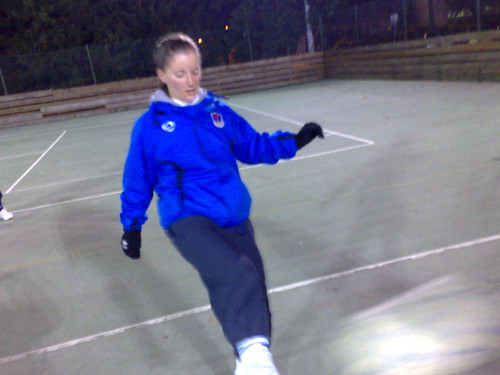From 2010 onwards the existing top flight, the FA Women’s Premier League National Division – itself only established in the 1992/93 season – will be replaced by a summer ‘Super League’.
The new league will be an eight team top division, with clubs currently being invited to apply for membership.
Those clubs granted a license will then play in the league over a three-year cycle, with there being no promotion or relegation.
Amongst the motives that led the FA to give the women’s game this radical shake-up is the desire to strengthen the England national team, and also to prevent top domestic players from moving to America to play in professionally in the fledgling WPS.
But what does it all mean for the majority of clubs currently playing at Premier League level?
Leading women’s teams such as Arsenal and Leeds Carnegie are expected to bid for a place in the new league, and even the likes of Manchester United, who disbanded there women’s team in 2005, are being touted as potential wildcards for a place in it.
On the other hand, a number of clubs are not even considering applying to become part to the new league.
One such club is Cardiff City Ladies, the only Welsh team currently playing in the Women’s Premier League structure.
The decision not to apply was taken due to reasons outlined to me at a first team training session on the tennis courts outside the Welsh Institute of Sport, Sophia Gardens.

The main issue is money.
Attracting the money and sponsorship required to stake a claim for membership of the new league would not be easy for the club.
Like many of the top women’s football teams, Cardiff City Ladies once had ties with the local men’s team – albeit only for a relatively short period, between 2001 and 2003 – however after an acrimonious disagreement over the way the club should be ran, these links were cut.
With legal proceedings hanging in the air over the women’s club right to use the word 'City' in their name, the club returned to independent status with very little money to spend on the team.
Although more than five years have passed, things haven’t changed to the extent that the club would be able to spend the kind of money the FA are asking for.
Karen Jones, Cardiff City Ladies club secretary, told me that in order to apply for a license: “You have to present a considerable amount of capital.
“We understand this would be in the region of £160,000. You would also need a sponsor or partner.
“So we are just not in the position to bid.”

Another issue would be that on joining the Super League, players would have to become semi-professional, in theory to devote part of their time into working on football schemes within Cardiff.
This would mean they would be required to set up a business model in order to centrally employ up to forty of the players, coaches and other staff.
Michele Adams, Cardiff City Ladies team manager, said: “The twenty players who would be involved (with a Super League club) will be employed within the community.
“We haven’t got the business acumen to employ forty people, and so we would need professional help on that.
“Without support, we wouldn’t have the time to start what in all effects would be a new business.”
Michele Adams, Cardiff City Ladies coach, explains why the club are currently not in a position to apply for membership of the FA Women’s Super League, and how this situation could change in the future.
Potentially, another problem the club could face surrounds there place in European competition.
Unlike the men’s team, Cardiff City Ladies have the ability to qualify for Europe through the Welsh Cup, and thus are able to reach the preliminary stages of the UEFA Women’s Cup (women’s football’s equivalent to the Champions League).
They were involved in the competition earlier this season, and have been in each of the five years before that.
Should they gain membership to an 'English' league of the kind the FA are planning, there is the worry that this could put their future European aspirations in jeopardy.
At time of writing, Cardiff City Ladies sit second in the FA Women’s Premier League Southern Division.
They were relegated from the National Division last season, having spent two years in the top flight.
Any hopes of ‘bouncing back’ at the first attempt have already been dashed, as the restructuring plans means there will be no promotion this season.
So Cardiff City Ladies are left challenging for the league, before waiting to see which division they will be competing in come 2009/10.
“We just want to see how high we can finish at the end of the season,” said Karen Jones, “So, when the restructuring is done, hopefully we will be in the highest flight underneath the top eight.”
Click the play button above to hear Cardiff City Ladies club secretary Karen Jones speaking about the FA Women’s Super League, why the club has decided not to apply for a place in it, and what the future holds for them.
To view a photo gallery of pictures from my visit to the team’s first team training session at the Welsh Institute of Sport, Sophia Gardens, click here.







